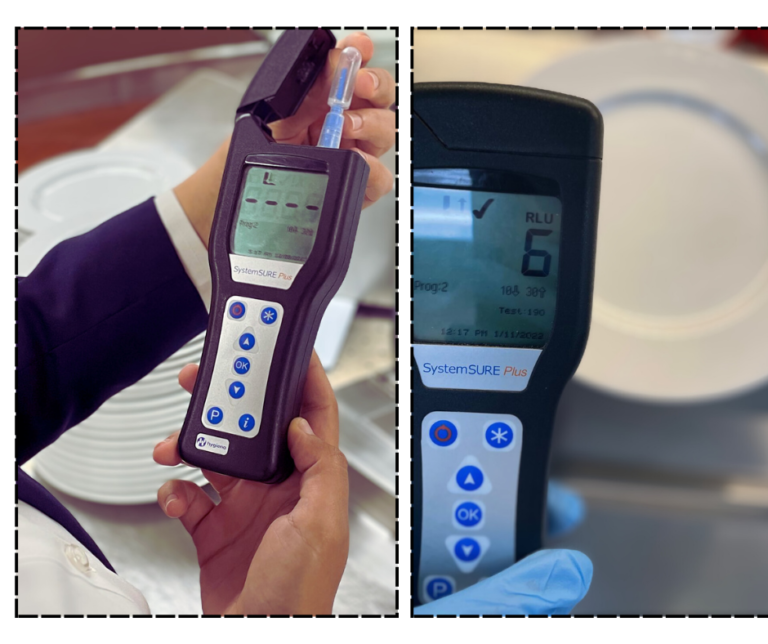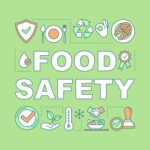These days, food factories are super serious about keeping things squeaky clean. They’re going all out to make sure their facilities are spotless and microbe-free. It’s a big deal to maintain such a hygienic environment. But how can you know if all that cleaning is doing the job? Well, there’s this pretty cool molecule called Adenosine triphosphate (ATP) that holds the answers.
Unveiling ATP: The Molecular Indicator
ATP is a fundamental molecule found in all living cells, and its primary role is to facilitate the transfer and storage of energy within these cells. The intriguing aspect of ATP is that it serves as a potent indicator of the cleanliness quotient of your environment. Its presence or absence can provide invaluable insights into the efficacy of your cleaning processes.
According to Microbiology, ATP can originate from a lot of sources. “It can come from bacteria or mould; it can come from food residue, it can come from human skin. It can originate from anything that was once alive.

ATP Testing for Cleanliness in Food and Restaurants: How?
1. Select Testing Sites
Identify critical areas where testing should be performed. These may include food preparation surfaces, cutting boards, utensils, and high-touch surfaces like door handles and light switches.
2. Collect ATP Samples
Using a swab, collect samples from the selected surfaces. Be sure to follow the manufacturer’s instructions for swabbing techniques.
3. Insert the Swab into the ATP Device
Carefully insert the swab into the ATP testing device. The device contains a reagent that reacts with ATP, producing light. The amount of light produced is directly proportional to the amount of ATP on the swab.
4. Interpret the Results
The ATP device will provide you with a numerical value representing the amount of ATP detected. The ATP testing device measures the amount of light produced and gives a numerical result, usually in Relative Light Units (RLUs)—the higher the RLU, the more ATP and presumably the more contamination.
Compare this value to established cleanliness thresholds. If the reading exceeds the acceptable limit, re-clean and re-test the area.
Common Queries about ATP Testing
Let’s delve deeper into the subject by addressing some of the frequently asked questions about ATP testing in food processing:
Why is Verification of Cleaning Necessary?
At first glance, a surface might appear clean, but appearances can be deceptive. Some forms of contamination and debris are microscopic and elude detection by the naked eye. Considering that food products come into direct contact with these surfaces, it becomes paramount to mitigate the risk of contamination stemming from unclean surfaces.
The Advantages of ATP Testing
Testing for ATP emerges as an exceptionally efficient means of verifying cleanliness for several compelling reasons:
- Beyond Visual Inspection: Unlike a mere visual inspection, ATP testing delves deeper, providing insights into cleanliness that might not be apparent to the human eye.
- Quick and Sensitive: ATP testing is swift, delivering results in a matter of moments. Its sensitivity allows it to detect even minute traces of ATP.
- Quantitative Information: One of the standout benefits of ATP testing is its ability to furnish quantitative data. This quantitative aspect lends credibility to the verification process, offering a clear and measurable assessment of the cleaning procedures.
- Detecting Food Residues: Notably, ATP testing can identify the presence of food product residues. This is of paramount importance because failure to remove such residues from surfaces can leave behind nutrients that facilitate the growth of surviving organisms.
In conclusion, ATP emerges as a vital tool in the arsenal of food manufacturers striving to maintain impeccable cleanliness standards. Its ability to peer beyond the surface and provide tangible, quantitative data makes it an indispensable asset in ensuring the safety and quality of food handling areas.
- Certifications and Training important for Food Safety InspectorFood Safety Inspector or Food and Safety Officer(FSO) requires Certifications, training or Courses to move forward with their very important career. Besides being graduates and professionals in Food safety and technology, the Industry… Read more: Certifications and Training important for Food Safety Inspector
- Internal Auditor in a Food IndustryThe Food Safety Officer turns out to be an Internal Auditor reflecting ISO 22000. Let’s define Internal Auditing in the Food Industry first. It can be defined as a retrospection of the Food… Read more: Internal Auditor in a Food Industry
- Books on Food Safety & Hygiene Recommended FreeRecommended books that help in updating our knowledge and confidence as Food Safety & Hygiene officers. Handy guides for the Food Safety Team and it’s free. As a Food Safety officer, every day… Read more: Books on Food Safety & Hygiene Recommended Free
- Crack Food Safety Officer ExamsLet’s see how to crack the Competitive Exams of Food Safety Officer. The Food Safety Officer job will be a dream career for Food science and technology students in India. Public service Commission… Read more: Crack Food Safety Officer Exams
- Food Safety Team (FST) -Roles and ResponsibilitiesFood Safety Team has roles and responsibilities to ensure quality and standardized products in the food manufacturing industry. Their responsibilities range from keeping Food Safety Management Systems (FSMS) in place thus reducing hazards… Read more: Food Safety Team (FST) -Roles and Responsibilities
- The best Practices by a Food Safety Officer for ChillersThe best practices in Food Safety for Chillers are very important. Chillers are an important part of Food processing. Therefore we must ensure that the practices in Food Safety for Chillers are followed… Read more: The best Practices by a Food Safety Officer for Chillers




